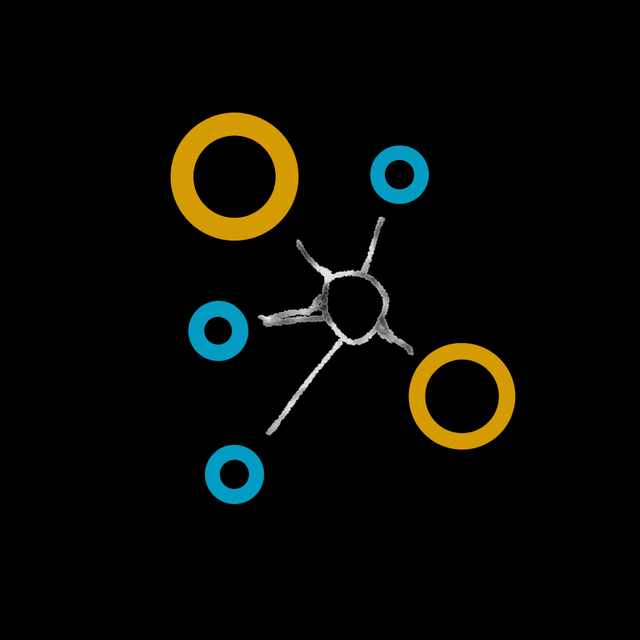SISTEM DETEKSI MUTU TELUR AYAM RAS MENGGUNAKAN SENSOR LDR (LIGHT DEPENDENT RESISTOR) BERBASIS ARDUINO UNO
##plugins.themes.academic_pro.article.main##
Abstract
Eggs are a food ingredient with excellent nutritional value, but their quality can deteriorate when stored for a long time. As consumers, it is crucial to be cautious in determining the quality of eggs to be consumed, as eggs may contain harmful pathogens that can cause diseases. The traditional manual detection process, typically done using a flashlight and water, is time-consuming and not always accurate. To address this issue, there is a need for an accurate egg quality inspection system to ensure that the eggs consumed are in a suitable condition. Based on this problem, an automated egg quality detection device has been developed using a Light Dependent Resistor (LDR) sensor. The device is composed of an Arduino Uno as the main microcontroller. When the LDR sensor detects light intensity emitted from the egg with a value <600, the egg is considered good; conversely, if the LDR value is >600, the egg is deemed bad. The output of the detection process is displayed on an LCD screen, accompanied by indicator lights. This device not only aids consumers in selecting high-quality eggs but also provides advantages for the egg industry. The implementation of this technology can enhance the efficiency of the mass egg selection process, reducing the risk of spreading diseases present in substandard eggs.
##plugins.themes.academic_pro.article.details##

This work is licensed under a Creative Commons Attribution-NoDerivatives 4.0 International License.
References
- K. Pertanian, OUTLOOK KOMODITAS PETERNAKAN TELUR AYAM RAS PETELUR. 2022.
- K. Adri, Mardhatillah, P. Ramlan, S. Sulaiman, Zulkarnain; Said, Febrianti, and Devy, “Pengaruh Angka Konsumsi Telur Dan Cara Pengolahan Terhadap Prevalensi Stunting,” J. Kesehat., vol. 14, no. SUPPLEMENTARY, pp. 191–195, 2023.
- W. Bilyaro, D. Lestari, and A. S. Endayani, “IDENTIFIKASI KUALITAS INTERNAL TELUR DAN FAKTOR PENURUNAN KUALITAS SELAMA PENYIMPANAN,” J. Agric. Anim. Sci., vol. 1, no. 2, 2021.
- A. Ken Ratu Gharizah, P. Andry, and Y. Endah, “The Quality and Good Method of Storing Eggs in an Effort to Maintain Optimal Nutrition during the COVID-19 Pandemic Period,” Farmers J. Community Serv., vol. 1, no. 1, pp. 24–28, 2020.
- D. S. Wijayanti, G. M. Aji, and A. Sumardiono, “Implementasi Sensor Ldr Dan Aplikasi Android Untuk Deteksi Kebusukan Telur,” E-JOINT (Electronica Electr. J. Innov. Technol., vol. 2, no. 1, pp. 12–18, 2021, doi: 10.35970/e-joint.v2i1.736.
- D. F. Anggraini, A. Sudarmaji, and R. Listanti, “Rancang Bangun Alat Pendeteksi Kualitas Telur Berbasis Arduino Dengan Sistem Fuzzy Logic,” J. Agric. Biosyst. Eng. Res., vol. 3, no. 1, p. 1, 2022, doi: 10.20884/1.jaber.2022.3.1.5032.
- A. Baiquni et al., “Design of Detecting and Sorting Equipment for Egg Quality Based on Arduino Uno Microcontroller Program Studi Teknik Informatika , Universitas Darussalam Gontor PENDAHULUAN Dalam proses pengolahan yang ada didalam industri saat ini secara bertahap berkemba,” vol. 04, no. 01, pp. 41–52, 2020.
- M. Fadil, A. J. Lubis, and I. Lubis, “Alat Pendeteksi Kondisi Telur Dan Pensortir Besar Telur Ayam Berbasis Arduino Uno,” Inform. Kaputama, vol. 5, no. 2, pp. 212–218, 2021.
- M Mujiono, A. K. Nalendra, and E. H. Candrapuspa, “Penerapan Logika Fuzzy pada Alat Pendeteksi Kualitas Telur Berbasis Mikrokontroler Arduino,” Gener. J., vol. 7, no. 1, pp. 8–13, 2023, doi: 10.29407/gj.v7i1.17239.
- D. Christover, A. Y. Panca T.S., J. A. Purnomo, and M. M. Yusup, “Rancang Bangun Alat Pendeteksi Kebusukan Telur Menggunakan Metode Fuzzy Logic Berbasis Mikrokontroler Arduino Nano 328,” JST (Jurnal Sains Ter., vol. 5, no. 1, 2019, doi: 10.32487/jst.v5i1.584.
- S. Saifullah, “Analisis Perbandingan He Dan Clahe Pada Image Enhancement Dalam Proses Segmenasi Citra Untuk Deteksi Fertilitas Telur,” J. Nas. Pendidik. Tek. Inform., vol. 9, no. 1, p. 134, 2020, doi: 10.23887/janapati.v9i1.23013.
- D. Christian, D. Budhi Santoso, and R. Rahmadewi, “Implementasi Digital Image Processing Sebagai Pendeteksi Posisi Matahari Pada Perancangan Dual Axis Solar Tracker,” Teknokom, vol. 6, no. 2, pp. 116–122, 2023, doi: 10.31943/teknokom.v6i2.150.
- R. Rosaly and A. Prasetyo, “Pengertian Flowchart Beserta Fungsi dan Simbol-simbol Flowchart yang Paling Umum Digunakan,” Https://Www.Nesabamedia.Com, vol. 2, p. 2, 2019, [Online]. Available: https://www.nesabamedia.com/pengertian-flowchart/https://www.nesabamedia.com/pengertian-flowchart/.
- Y. Rahmanto, A. Rifaini, S. Samsugi, and S. D. Riskiono, “SISTEM MONITORING pH AIR PADA AQUAPONIK MENGGUNAKAN MIKROKONTROLER ARDUINO UNO,” J. Teknol. dan Sist. Tertanam, vol. 1, no. 1, p. 23, 2020, doi: 10.33365/jtst.v1i1.711.
- Desmira, D. Aribowo, P. Gigih, and S. Islam, “Aplikasi Sensor Ldr (Light Dependent Resistor) Untuk Efisiensi Energi Pada Lampu Penerangan Jalan Umum.,” PROSISKO J. Pengemb. Ris. dan Obs. Sist. Komput., vol. 9, no. 1, pp. 21–29, 2022.
Most read articles by the same author(s)
- Alfin Alif Syaiji, Rahmat Hidayat, SISTEM OTOMATISASI PEMANAS AIR MENGGUNAKAN SENSOR DHT11 BERBASIS ARDUINO UNO , TEKNOKOM: Vol. 6 No. 2 (2023): TEKNOKOM
- Faisal Faris Aziz, Rahmat Hidayat, PENDEKATAN INTERNET OF THINGS UNTUK PREDIKSI BIAYA PENGGUNAAN LISTRIK RUMAH PADA APLIKASI ANDROID , TEKNOKOM: Vol. 6 No. 2 (2023): TEKNOKOM
- Harris Rifqi Febrijanto, Rahmat Hidayat, ANALISIS PENGUJIAN TAN DELTA PADA TRANSFORMATOR ARUS DI GITET TASIKMALAYA BAY PENGHANTAR BANDUNG SELATAN-1 , TEKNOKOM: Vol. 6 No. 2 (2023): TEKNOKOM
- Rachma Khairunisa, Rahmat Hidayat, VEHICLE STARTER SYSTEM FOR SAFETY BASED MICROCONTROLLER USING INTERNET OF THINGS , TEKNOKOM: Vol. 6 No. 1 (2023): TEKNOKOM
- Rahmat Hidayat, Marza Ihsan Marzuki, Yuliarman , Ibrahim, Edmund, Safrian, Imam Budi Santoso, Suroyo, THE COMPARATIVE STUDY ANALYSIS LOGICAL FILES RECOVERY AND LOW LEVEL FILES RECOVERY USING DIGITAL FORENSIC METHODS , TEKNOKOM: Vol. 5 No. 2 (2022): TEKNOKOM
- Taufik Maulana Tanjung, Rahmat Hidayat, IMPLEMENTATION OF TWO LANGUAGE CHATBOT WEB TO FIND INFORMATION ON BATIK USING THE ARTIFICIAL NEURAL NETWORK MODEL , TEKNOKOM: Vol. 6 No. 2 (2023): TEKNOKOM
- Alghi Sawaludin, Rahmat Hidayat, Reni Rahmadewi, IMPLEMENTATION OF FUZZY LOGIC ON SPEED PREDICTION ON INCLUDING ROADS , TEKNOKOM: Vol. 6 No. 1 (2023): TEKNOKOM
- Oracle Bramantyo Wardhana, Rahmat Hidayat, IMPLEMENTATION OF MEDIUM VOLTAGE AUTOMATIC CHANGE OVER (ACO-MV) DEVICE AS POWER OUTAGE REDUCTION FOR PREMIUM CUSTOMERS AT PT PLN (PERSERO) UP3 KRAMAT JATI , TEKNOKOM: Vol. 6 No. 2 (2023): TEKNOKOM


 https://ijeeemi.poltekkesdepkes-sby.ac.id/pages/pulsayuk/
https://ijeeemi.poltekkesdepkes-sby.ac.id/pages/pulsayuk/
